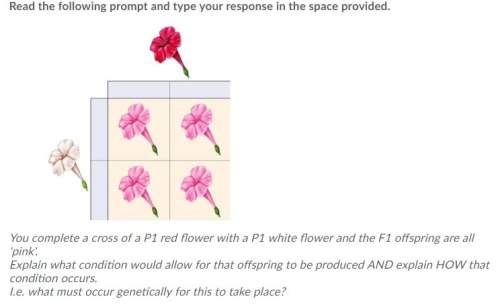
Working in the famous "fly room" at columbia university, you cross a homozygous recessive purple-eyed, vestigial-winged fruit fly (ppvv) with a heterozygous normal-eyed, normal-winged fly (ppvv). both genes are found on chromosome 2. you discover the following percentages of flies in the f1generation: 42 percent with normal eyes and normal wings; 46 percent with purple eyes and vestigial wings; 6 percent with normal eyes and vestigial wings; and 6 percent with purple eyes and normal wings. a) what is the expected outcome for a cross involving two linked genes? why do you think your results differed from the expected outcome? b) which of the offspring are recombinant types? c) determine the recombination frequency for this cross. d) based on your findings, how many map units apart are the genes for eye colour and wing type on chromosome 2?

Answers: 2


Other questions on the subject: Biology


Biology, 22.06.2019 04:30, Gearyjames8
What is used to keep track of the gamates and possible offsprings combination
Answers: 2

Biology, 22.06.2019 04:50, kannstyles709
What part of the brain is highlighted in the diagram below?
Answers: 2

You know the right answer?
Working in the famous "fly room" at columbia university, you cross a homozygous recessive purple-eye...
Questions in other subjects:


Mathematics, 11.04.2020 23:55


Biology, 11.04.2020 23:56

English, 12.04.2020 00:09

Chemistry, 12.04.2020 00:09


Mathematics, 12.04.2020 00:09





